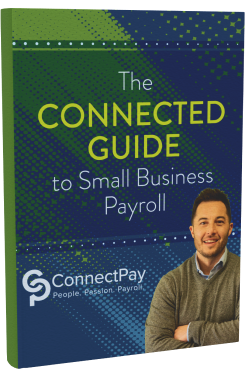How to Handle 1099 Payroll Without Losing Your Mind

Let’s face it—running payroll isn’t anyone’s favorite part of owning a business. And when independent contractors (aka 1099 workers) are involved, things can go from “tedious” to “totally confusing” fast.
Still, with more than half of the U.S. workforce expected to participate in the gig economy by 2027, it’s clear that contractors are here to stay. That means your business needs to be ready—not just to work with freelancers, but to pay them correctly, classify them properly, and stay compliant with IRS rules.
In this guide, we’ll walk you through everything you need to know about 1099 payroll:
- ✅ How to classify contractors correctly
- ✅ What forms you’re responsible for
- ✅ How and when to pay them
- ✅ What mistakes to avoid
Let’s make managing contractors simpler—so you can focus on growing your business, not drowning in forms.
What Is a 1099 Contractor, Exactly?
A 1099 contractor is someone you hire to perform services, but they’re not your employee. Think: freelancers, consultants, tradespeople, and creatives. They're self-employed, which means they handle their own taxes—including Social Security and Medicare.
The benefit? You’re not responsible for providing benefits like health insurance or contributing to payroll taxes.
The risk? Misclassify someone, and you could owe back wages, penalties, and unpaid taxes.
Step 1: Properly Classify Your Workers
Before anything else, you need to figure out whether a worker is a W-2 employee or a 1099 contractor. This isn’t a guess—it’s based on IRS guidelines.
The key factors the IRS looks at:
- Behavioral Control: Do you direct how and when the work gets done?
- Financial Control: Do you set payment terms and control the financial aspects of the job?
- Relationship Type: Are there benefits, long-term expectations, or other employee-like agreements?
If you’re still unsure, the IRS’s Common Law Test can help—or better yet, partner with a payroll expert who knows the rules.
🚨 Getting this wrong can cost your business thousands. Fines, penalties, and legal headaches await companies that misclassify workers.
Step 2: Understand Form 1099-NEC
This is the form you’ll need to report payments made to your independent contractors. If you pay any one contractor $600 or more in a calendar year, you must issue them a Form 1099-NEC.
What’s included on the form:
- Contractor’s name and address
- Social Security number or Taxpayer Identification Number (TIN)
- Total amount paid for the year
Since 2020, the 1099-NEC replaced the old 1099-MISC for contractor payments. If you’re still using the MISC version for this—stop! You’ll want to make the switch ASAP.
Step 3: How to Pay Contractors (the Right Way)
Unlike employees, contractors set their own rates and aren’t on a fixed salary. You’ll likely pay them:
- Per hour
- Per project
- Based on milestones
Here’s what a typical payment process looks like:
- Contractor submits a W-9: This gives you all the legal info you need—name, address, TIN, etc.
- You pay them: Direct deposit, ACH, PayPal, or checks are all common methods. (Avoid paying in cash—there’s no paper trail.)
- Track your payments: Your payroll software or accounting platform should keep records automatically.
💡 Pro Tip: Many contractors expect digital payment options. Make things easy with software that supports modern, streamlined payouts.
Step 4: Watch for Backup Withholding
If a contractor doesn’t give you their TIN or provides incorrect info on the W-9, you may be legally required to withhold 24% of their pay and submit it to the IRS. This is called backup withholding.
Make sure your records are accurate and up to date to avoid triggering this rule.
Step 5: Send Form 1099-NEC on Time
Once the calendar year wraps up, it’s your responsibility to send out completed 1099-NEC forms to:
- The contractor
- The IRS
📅 Deadline: January 31st
Use the information from the W-9 to complete the form accurately. Your payroll provider can often generate and submit these for you.
Why It Pays to Plan Ahead
Independent contractors offer flexibility and expertise—but only if you’ve got the right processes in place. Failing to manage 1099 payroll properly can lead to compliance issues, financial penalties, and IRS scrutiny.
The good news? You don’t have to figure it out alone.
At ConnectPay, we help small businesses simplify payroll—whether you’re working with employees, contractors, or a mix of both. From automating form collection to meeting filing deadlines, our team (and our tech) has your back.
Need Help With 1099 Payroll? We’re Here.
Whether you’re hiring your first freelancer or managing a growing team of contractors, ConnectPay can help you stay compliant, pay accurately, and save time.
✅ No overcomplicated software
✅ No unnecessary services
✅ Just clear, connected payroll support from real people
Let’s make payroll the easiest part of your week.






